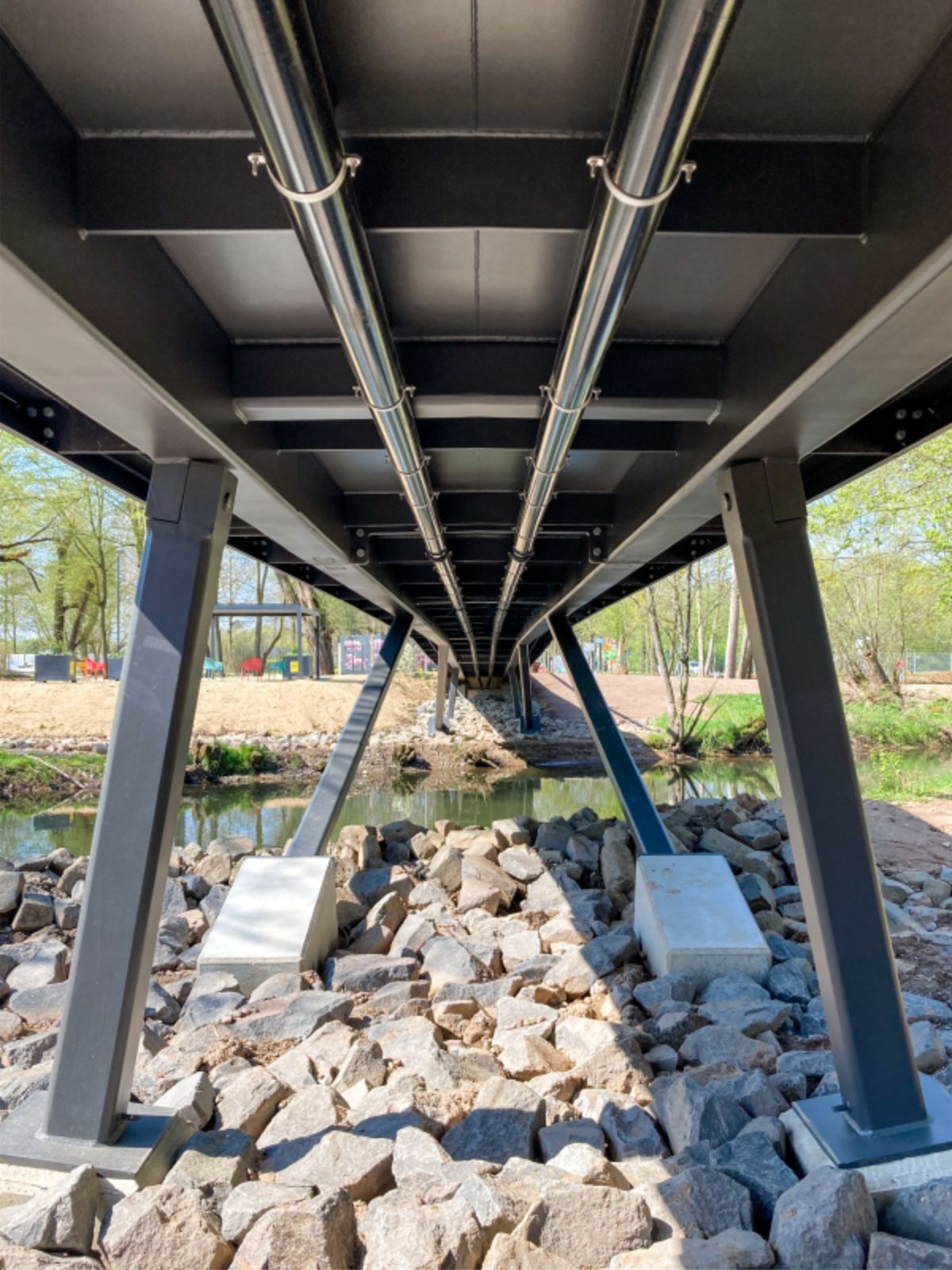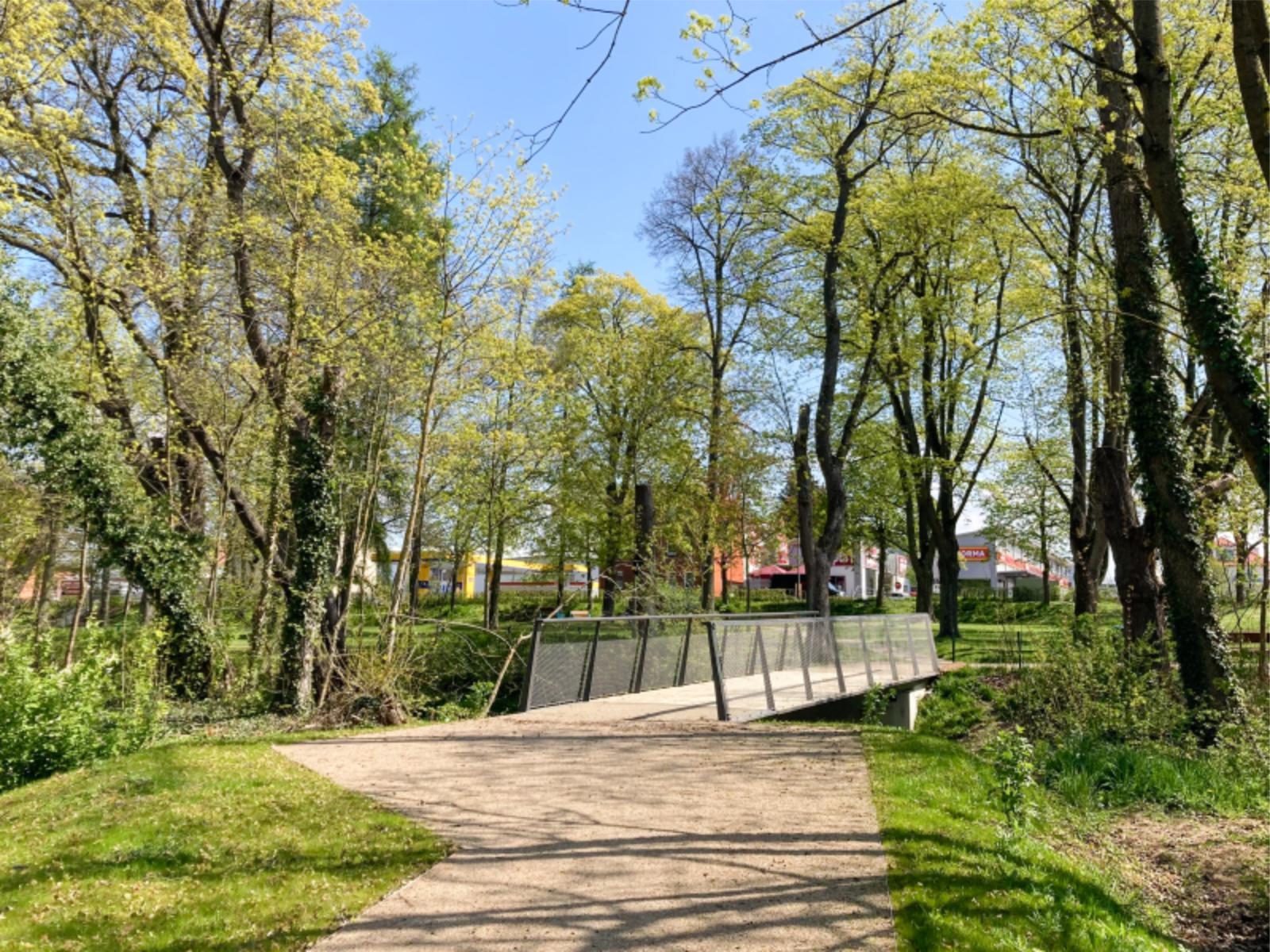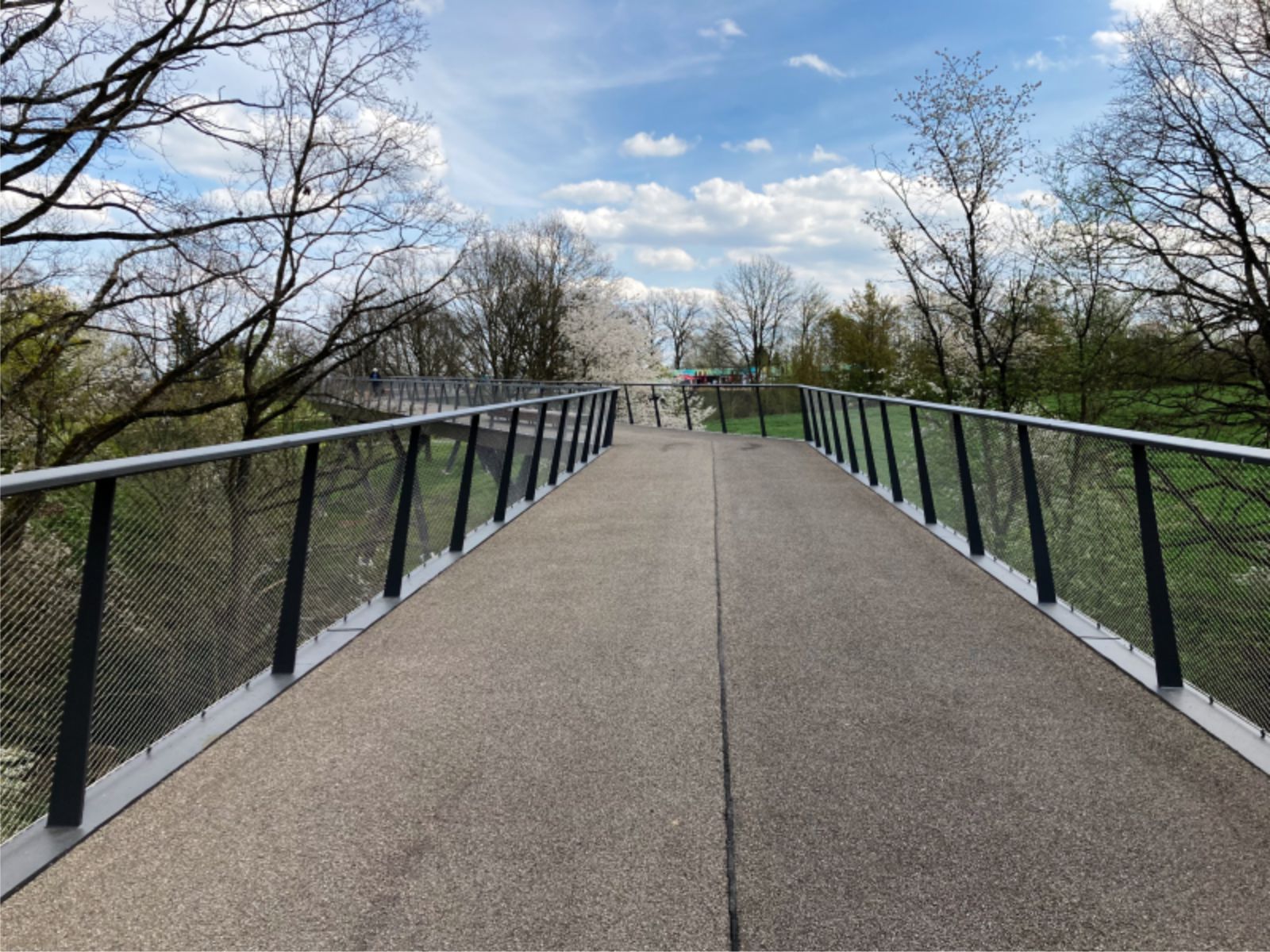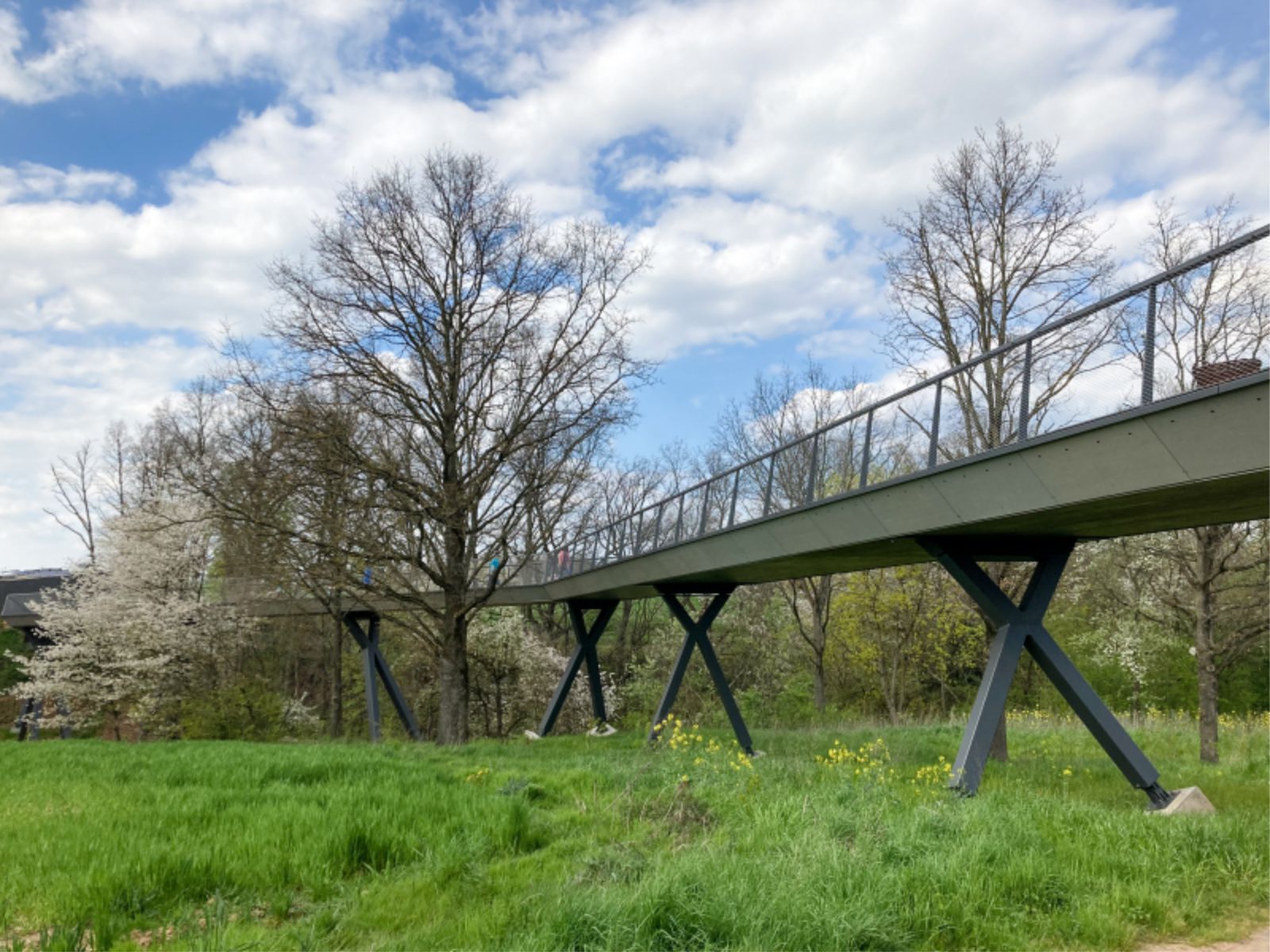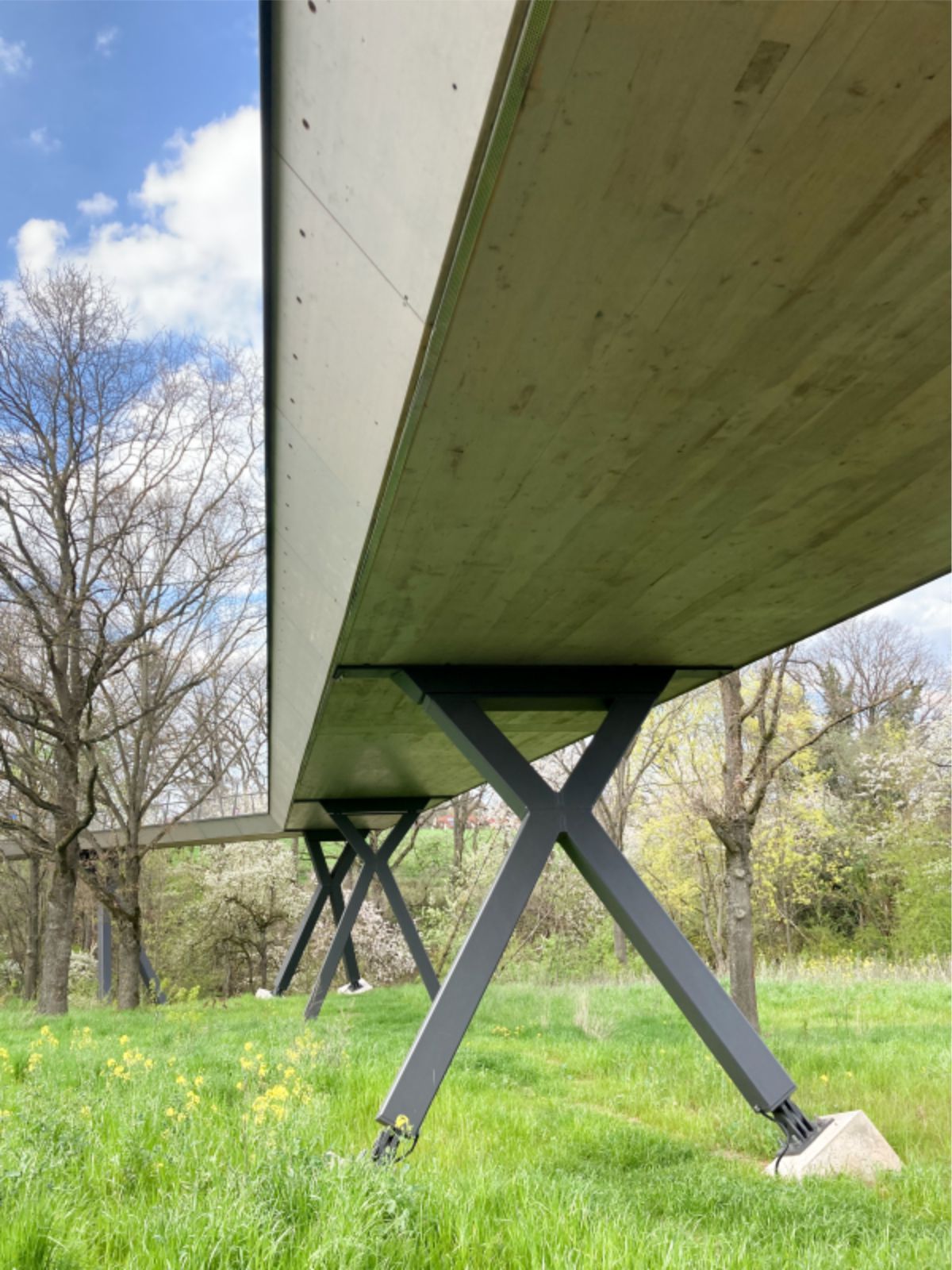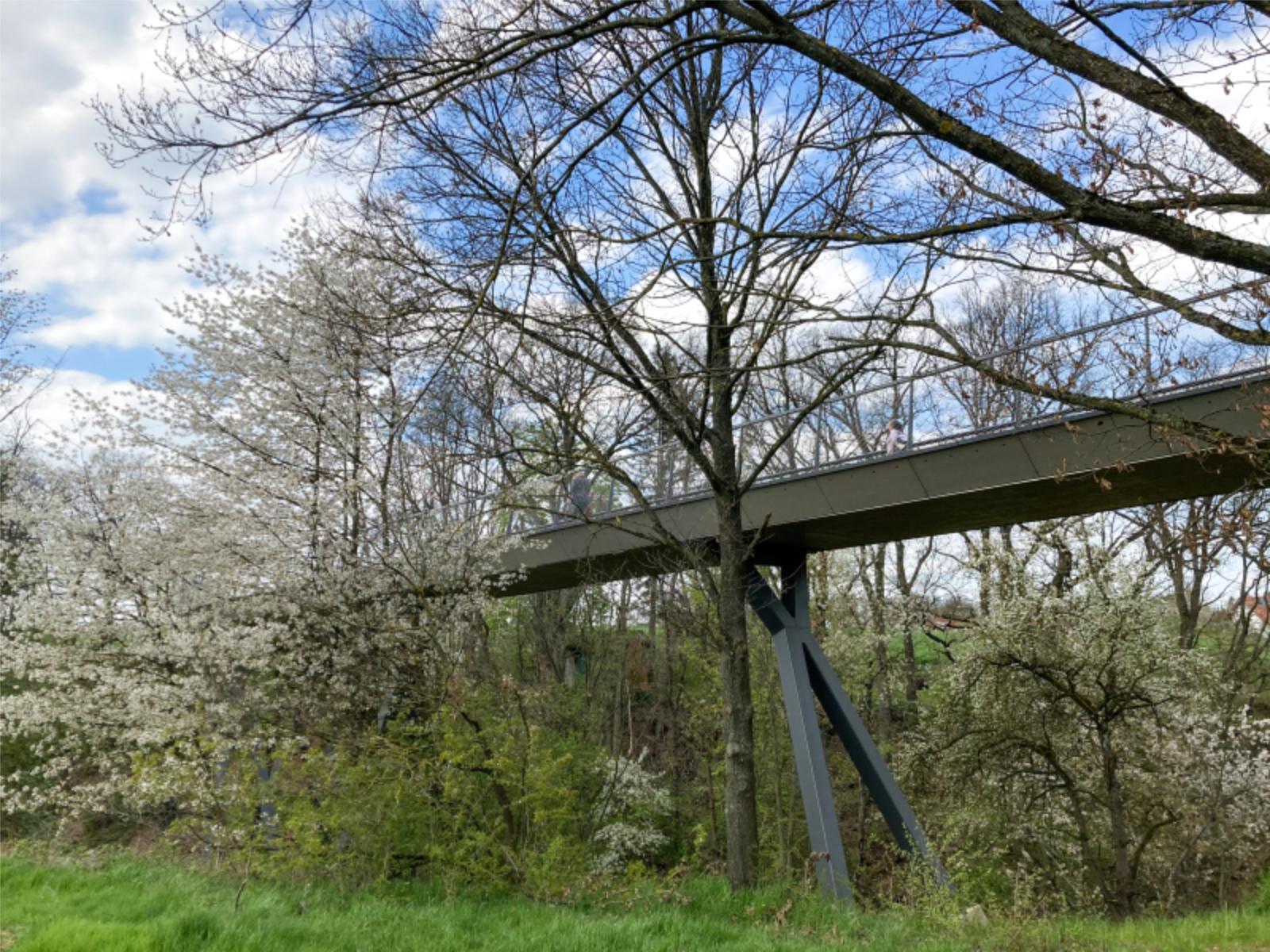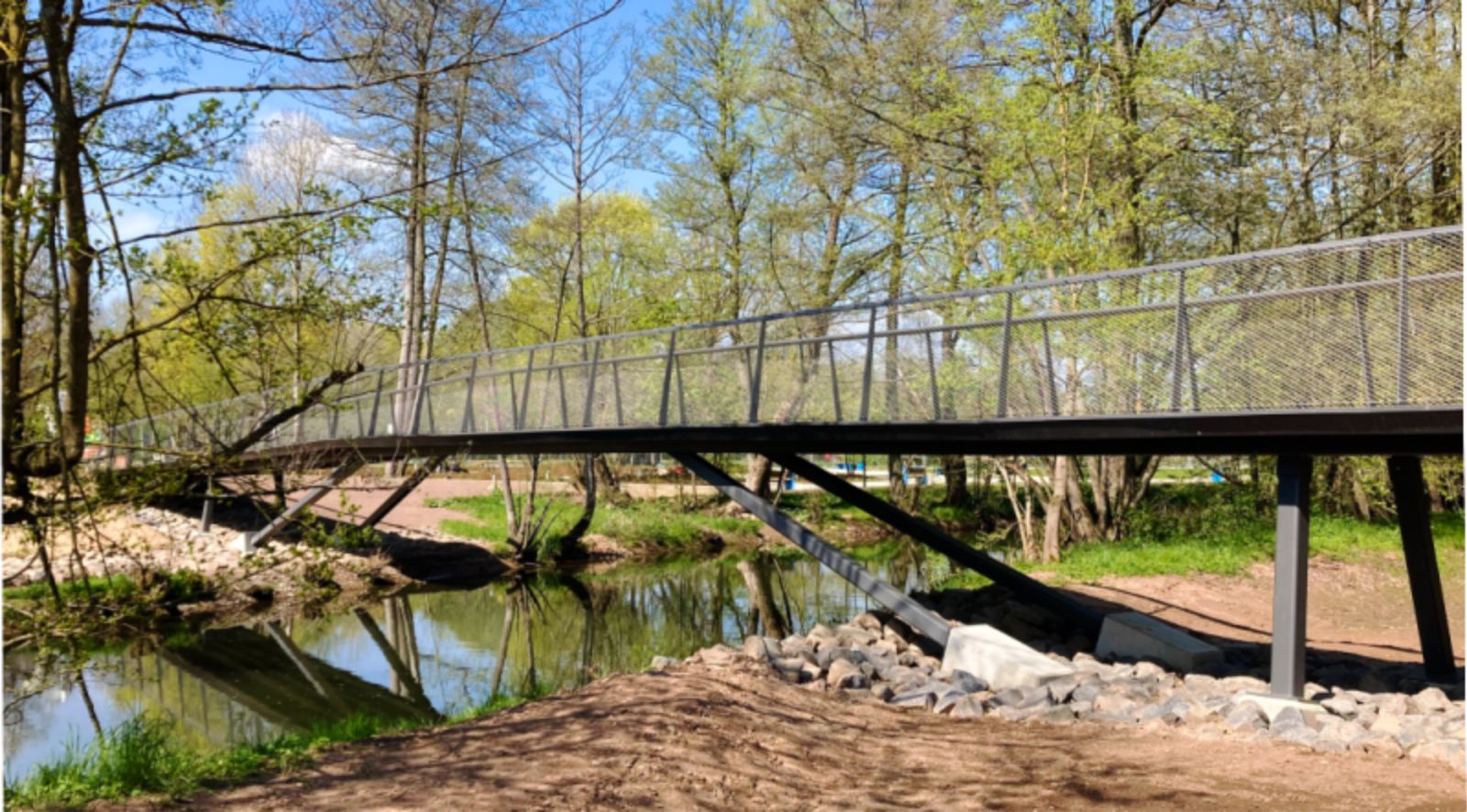For the State Horticultural Show, which will take place in Fulda from April 27 to October 8, 2023, Buro Happold, in close cooperation with Swillus Architekten and A24 Landschaft, designed three bridges for pedestrians and cyclists.
True to the motto “Fulda connects”, the bridges blend seamlessly into the landscape and enable visitors to the State Horticultural Show to explore the site on foot or by bike without barriers. All three bridges were built using a modular design with prefabricated elements, which represents both an efficient structural solution and an innovative, sustainable approach.
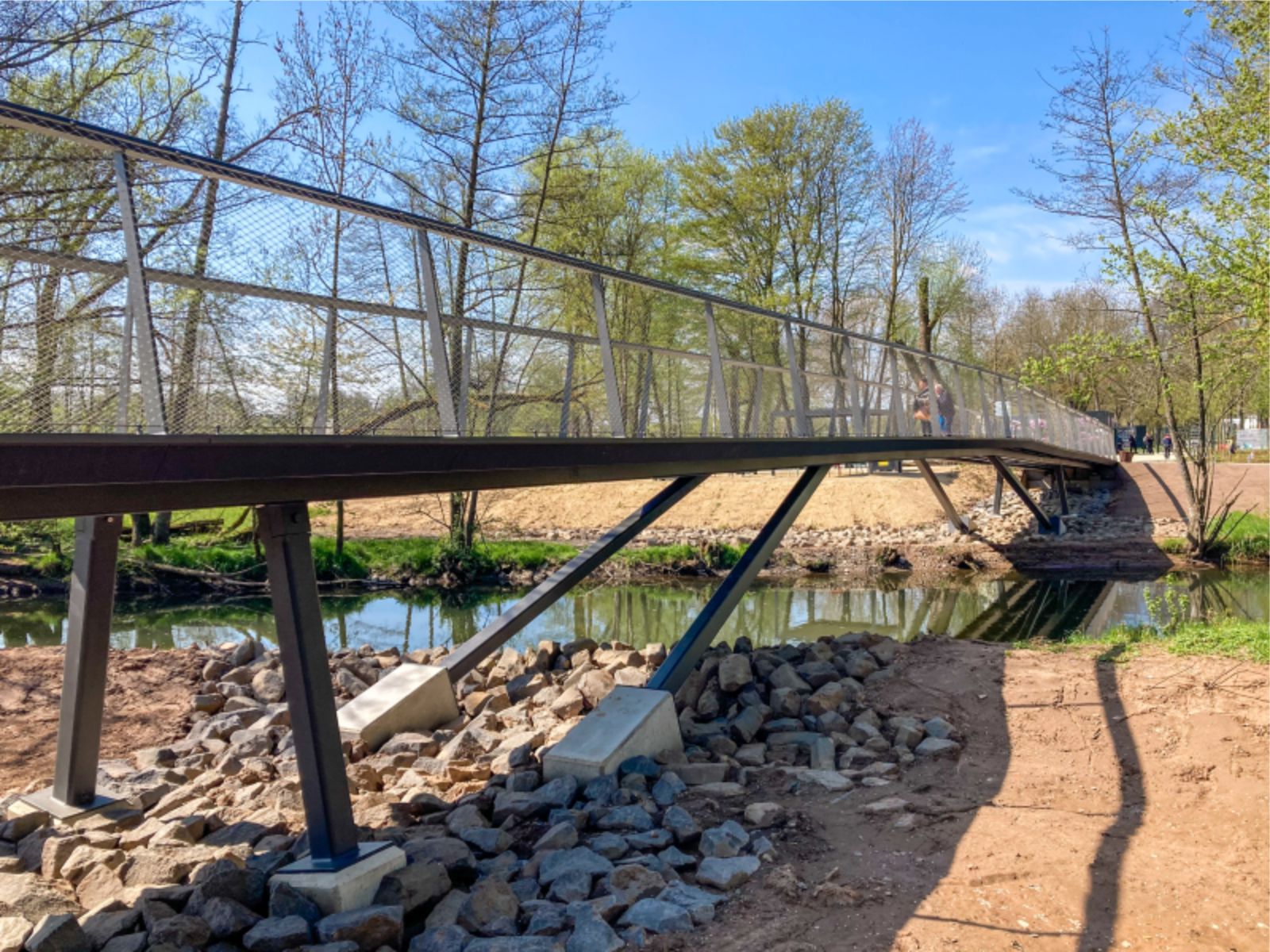
The State Garden Show 2023 will take place in Fulda, in the heart of Hesse. The master plan addressed, among other things, the challenge of creating a direct connection based on active mobility between the garden show and the city center.
In close collaboration with Swillus Architects and A24 Landschaft, Buro Happold designed three bridges that offer a fast and pleasant passage for pedestrians and cyclists. The bridges are integrated into the landscape and allow users to experience the remarkable surroundings.

Against the background of promoting active mobility as the key to a sustainable and liveable future in urban and rural areas, the designs focus on the needs of pedestrians and cyclists. Thanks to their simple geometry, the three bridges harmonize with the overall picture of the State Garden Show.
The designs include the jetty at Badegarten, a single-span girder bridge with a span of 10 metres, the jetty to the Hornungsmühle, a bridge with a length of 50 meters and a maximum single span of 16 metres, and the bridge over the Engelshaus, a bridge with a length of 160 metres with a maximum single span of 15.5 meters.

The design responded to the specific environmental conditions at the location in order to minimize the impact on nature and achieve a coherent overall picture. The largest bridge, the Bridge over the Angel’s House, was built with a prefabricated wooden deck assembled on site along with steel supports and concrete foundations.
300 cubic meters of wood were used for the construction, which binds around 300 tons of carbon dioxide. In addition, the use of relatively light wooden components allowed for an efficient construction process compared to a steel and concrete bridge. This also reduced the foundation loads and the size of the required foundations.
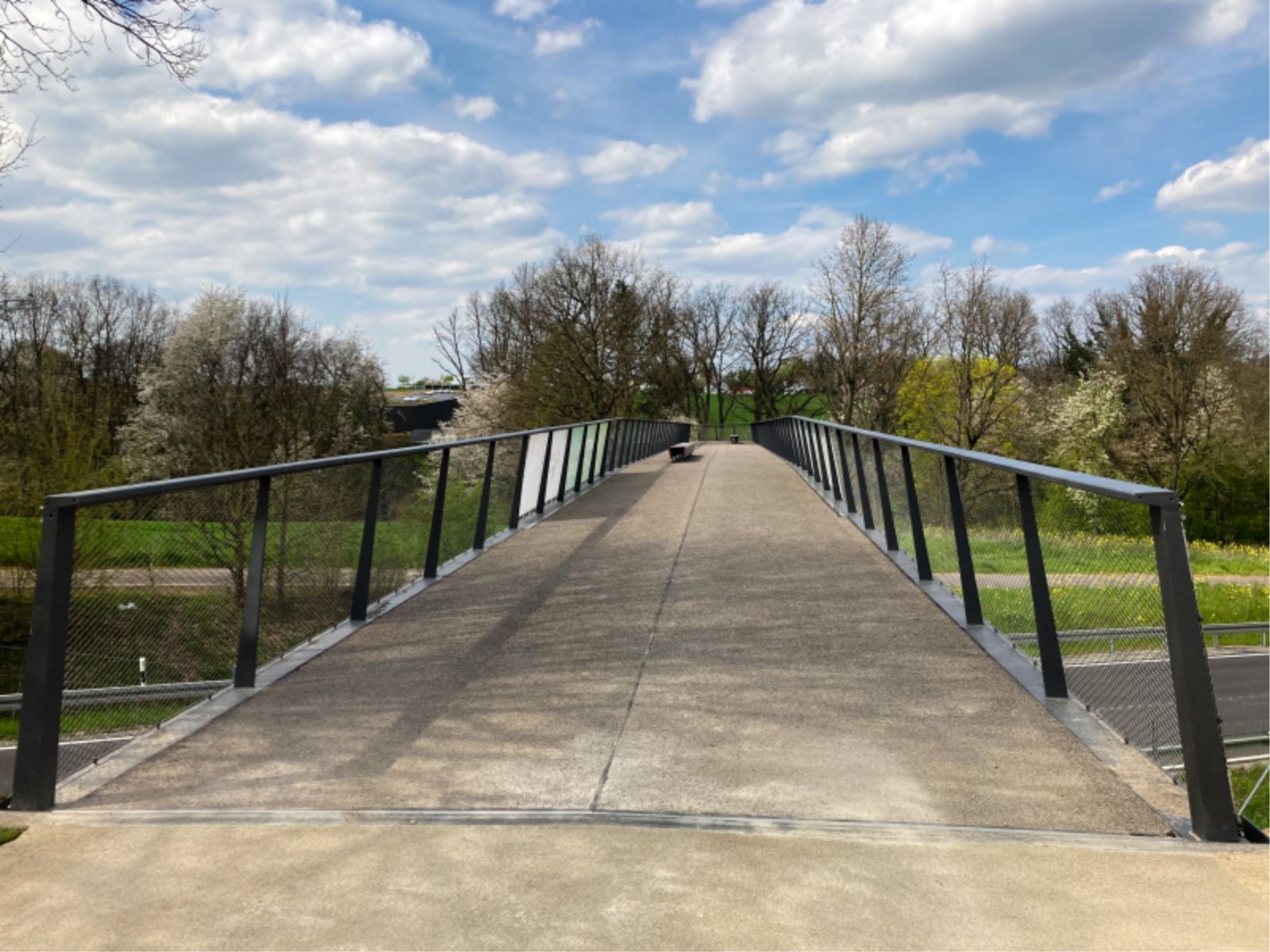
The materiality of the wood supports the harmony of the bridge with the surrounding nature. The footbridge to the Hornungsmühle, on the other hand, is an example of efficient, light and expressive steel design. Its striking geometry represents a bold but complementary intervention in the natural landscape.
Julia Karasinska-Sochacki, Associate Bridge Engineer, Buro Happold: “It was a pleasure and a fascinating challenge to design these three bridges for the State Garden Show in collaboration with Swillus Architects and A24 Landscape. The questions of mobility and sustainability, which we have taken up in our design solution, go far beyond the context of the garden show.
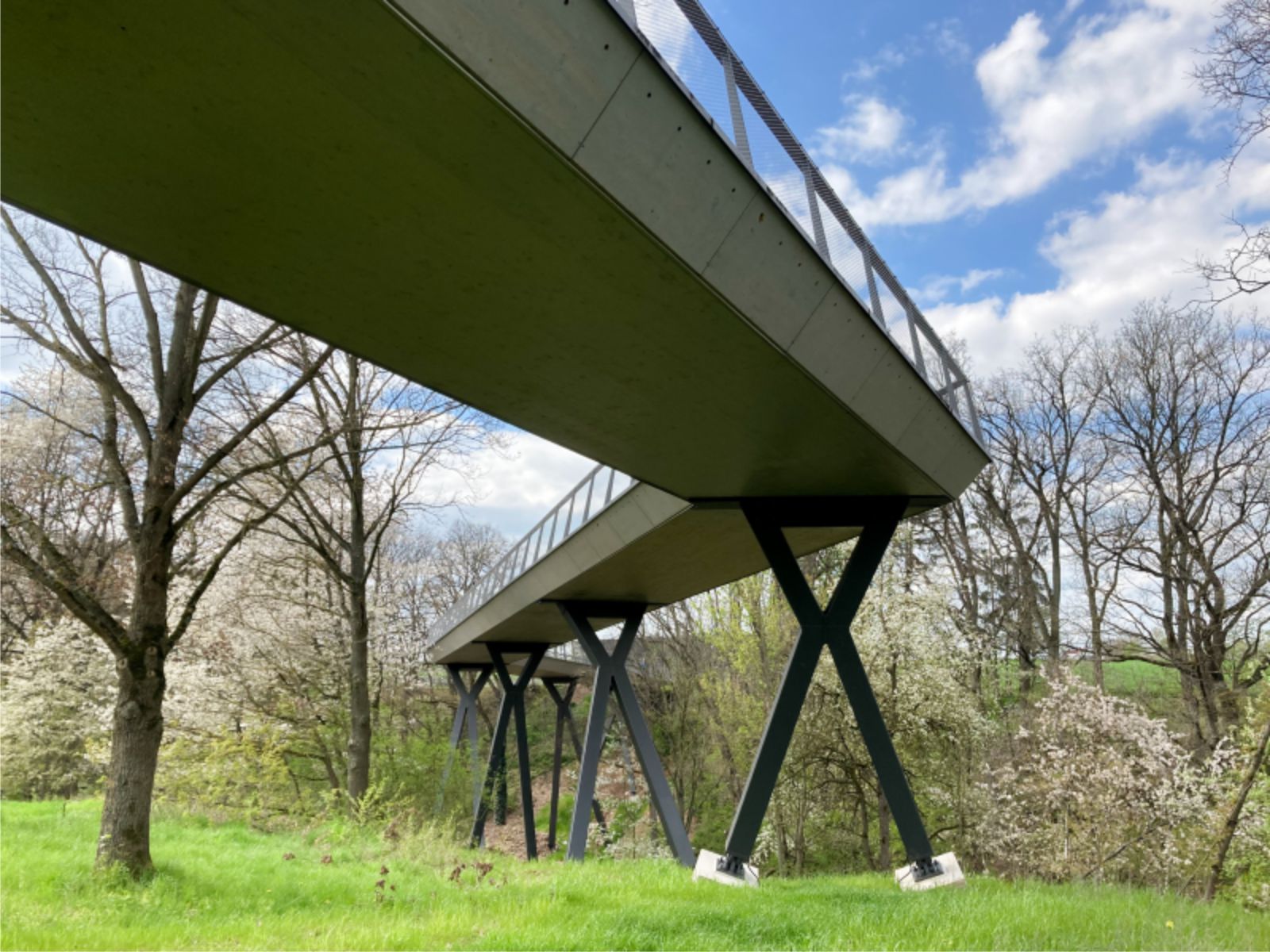
The bridges not only find a place in the charming landscape of the show, they also show the possibility to create paths of active mobility between urban and rural areas and to shape a healthier and more sustainable future together.”
Florian Foerster, Associate Director, Buro Happold: “The bridges for the State Horticultural Show in Fulda also stand for topics that we deal with in our work worldwide, on all scales and in all contexts: promotion of active mobility, complex connection of the natural and built environment and a holistic view of sustainability from the master plan to the material level.”

Daniel Schreiner, Stadtbaurat Fulda: “The “bridge over the Engelshaus” ideally embodies the motto of the state garden show “Fulda connects” by linking existing and newly created open spaces and making them more easily accessible as local recreation areas for the people in our city.
The newly created barrier-free connection for pedestrians and cyclists between the western parts of the city and the city center represents an important building block for our urban development.” Source by Buro Happold and photos Courtesy of Send / Receive.
